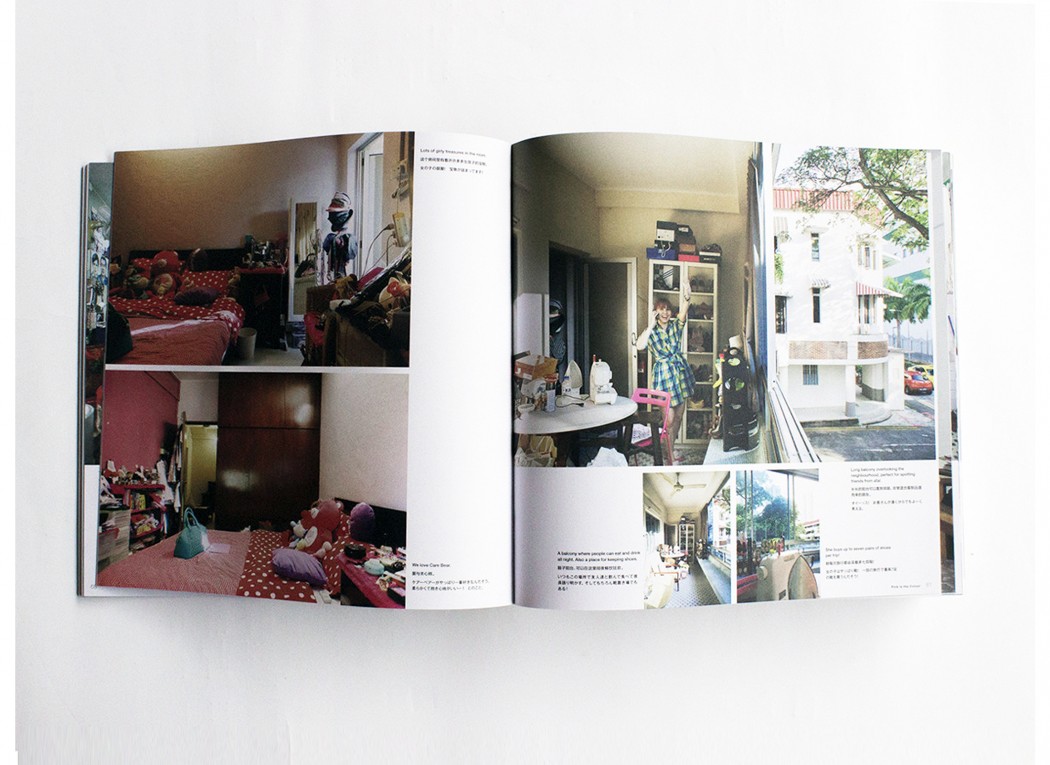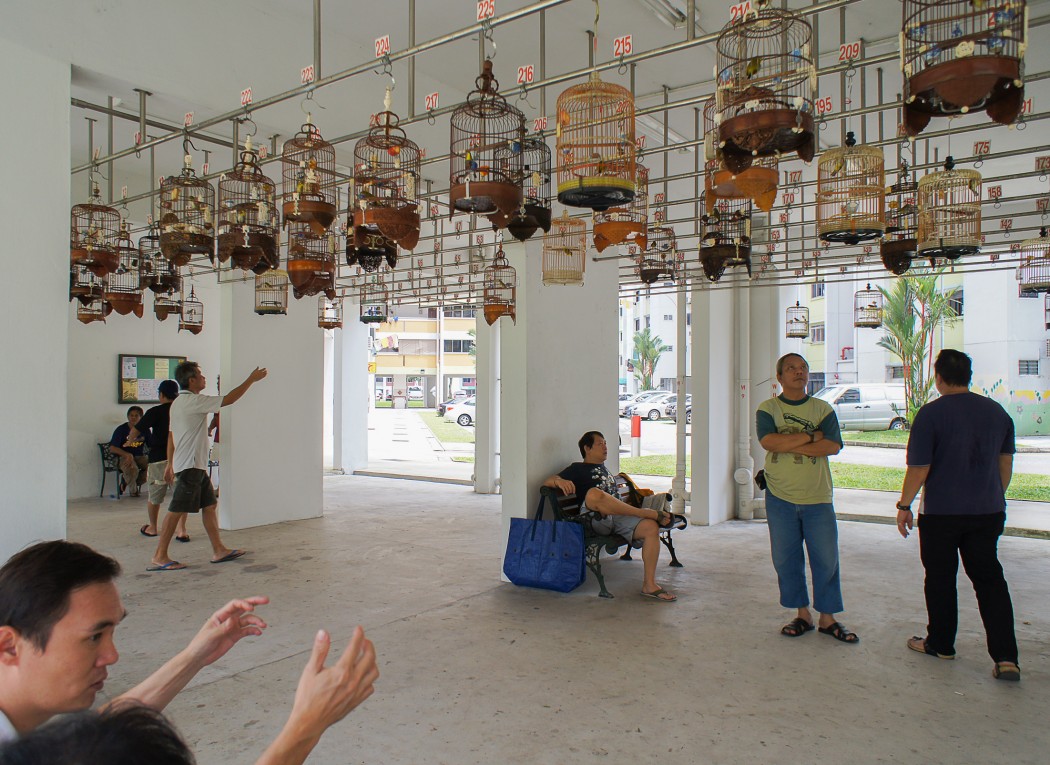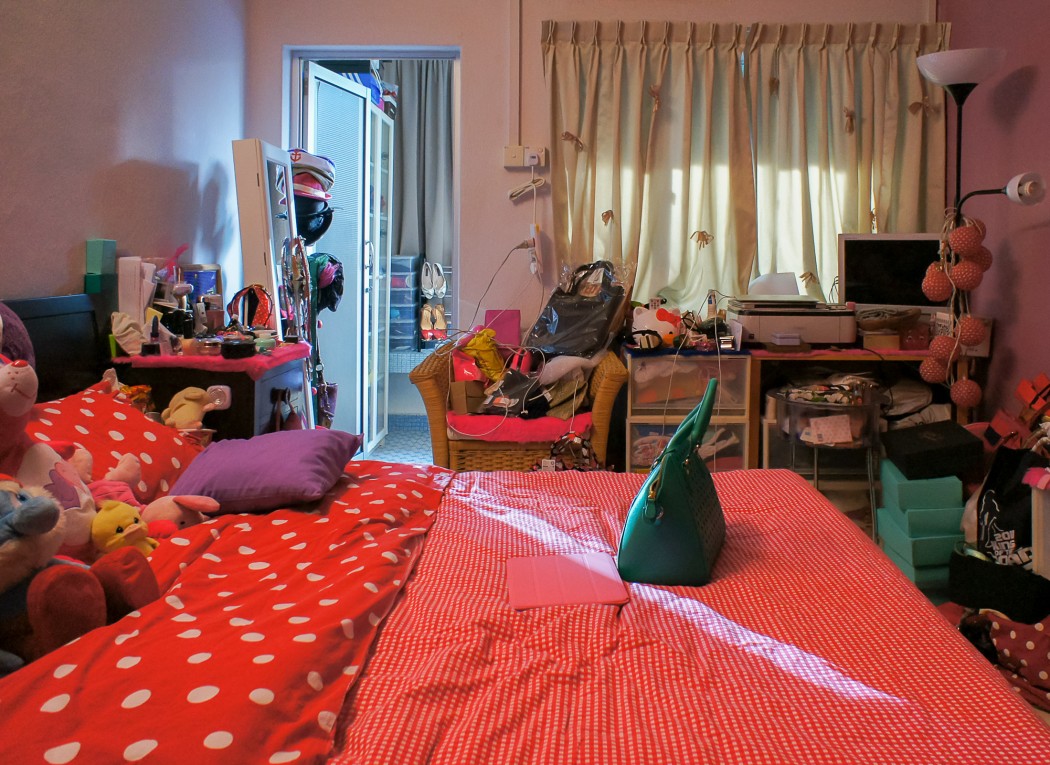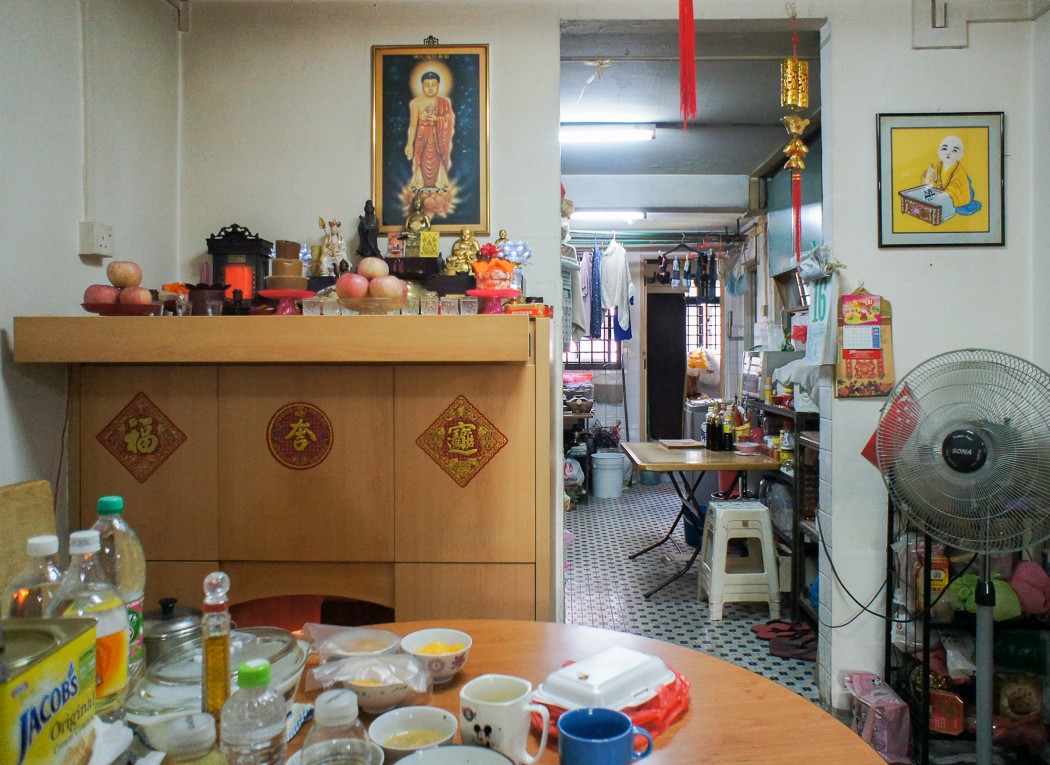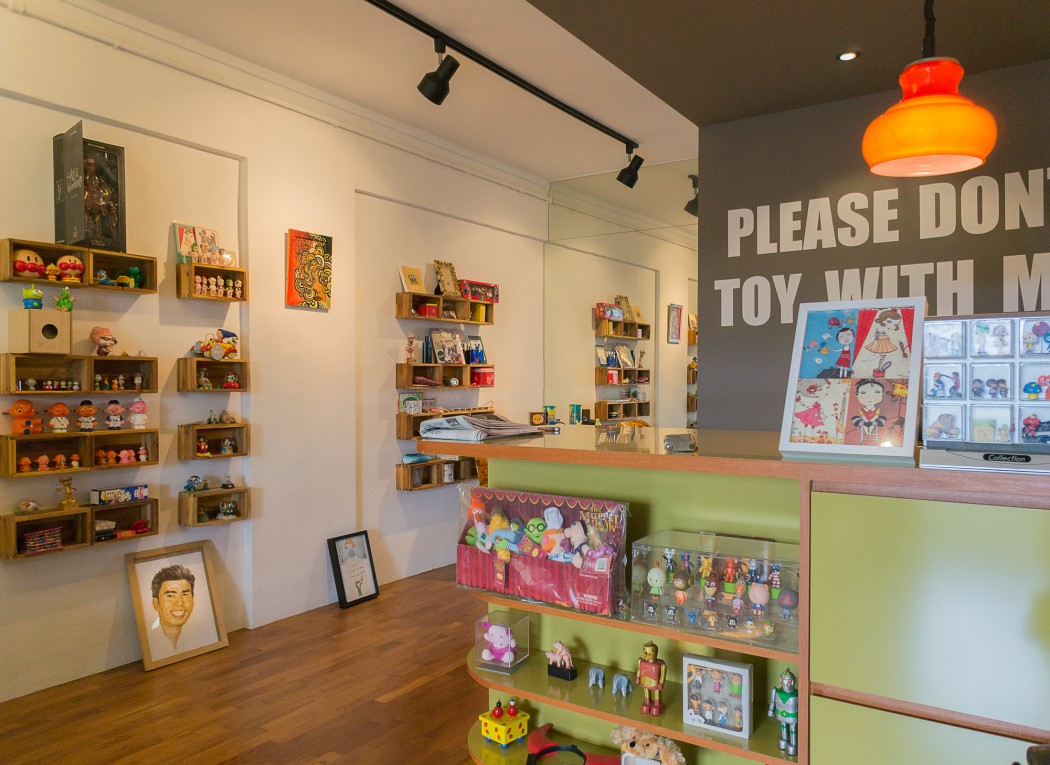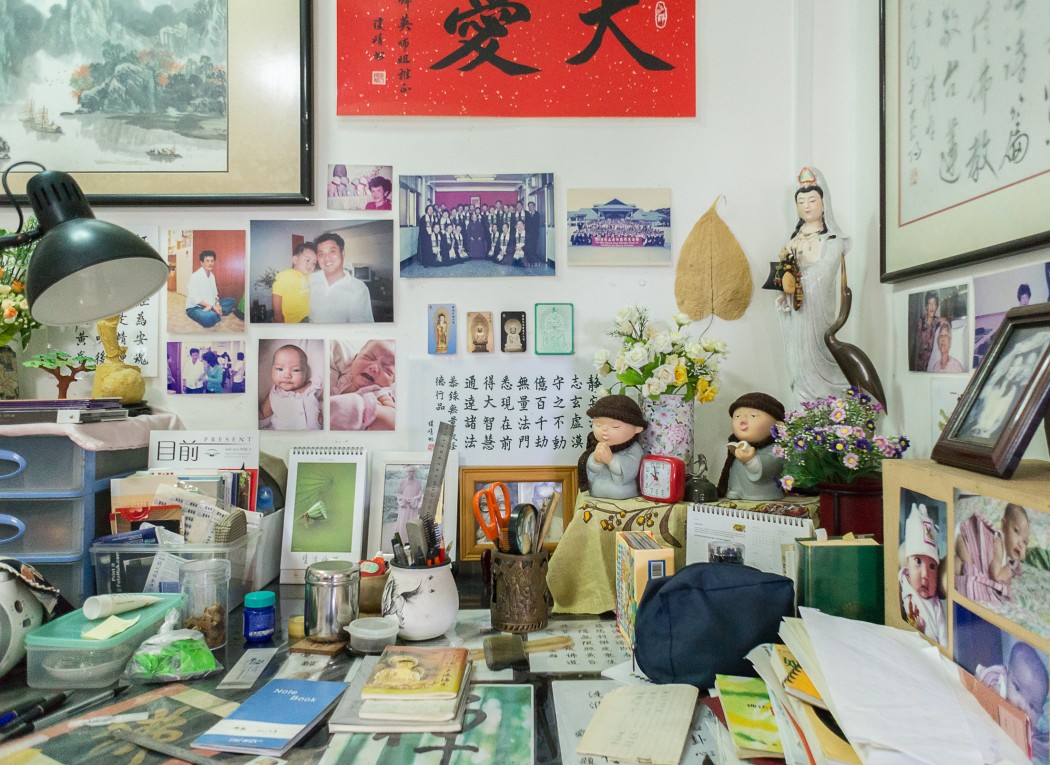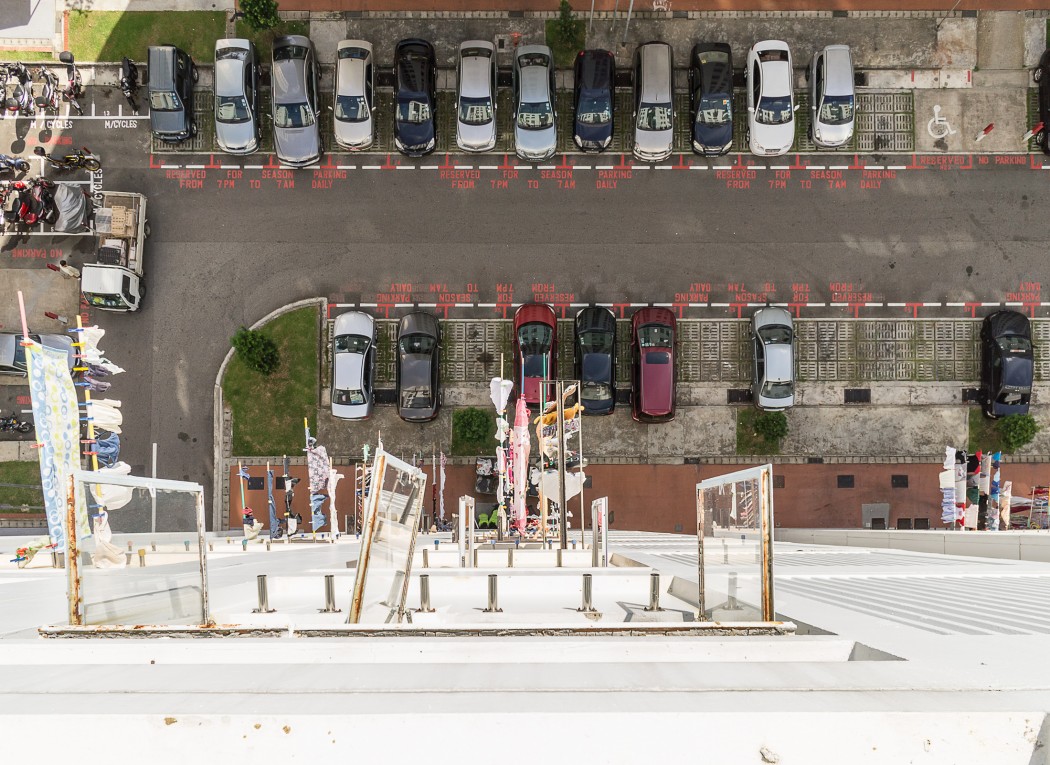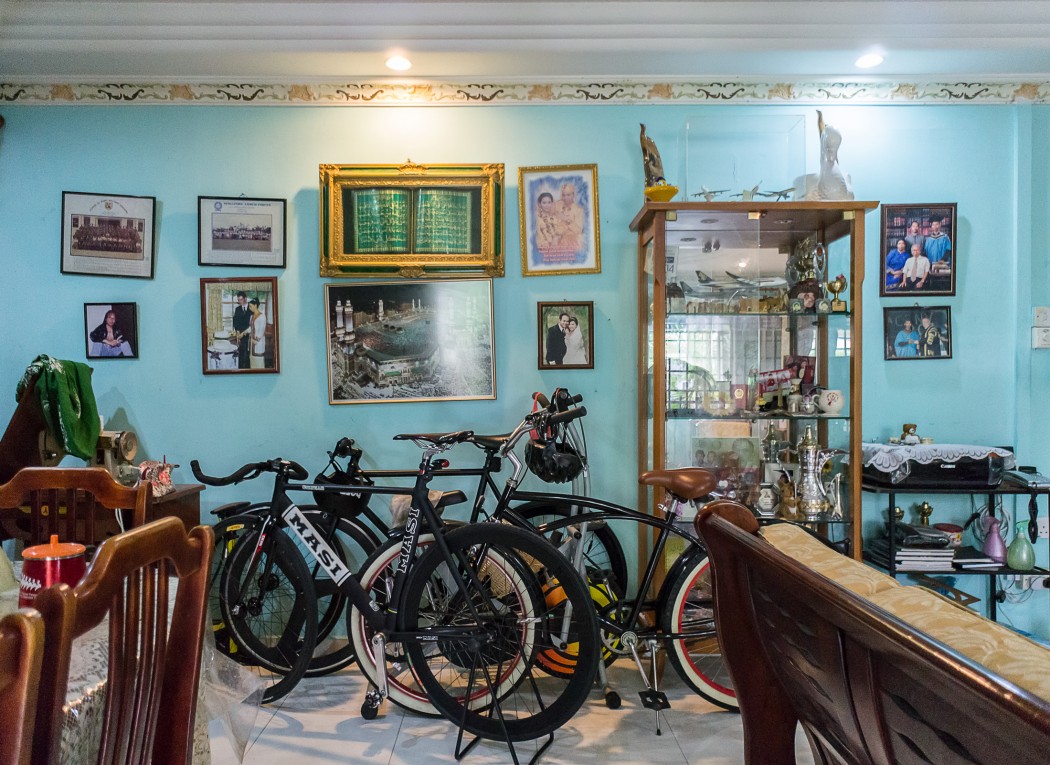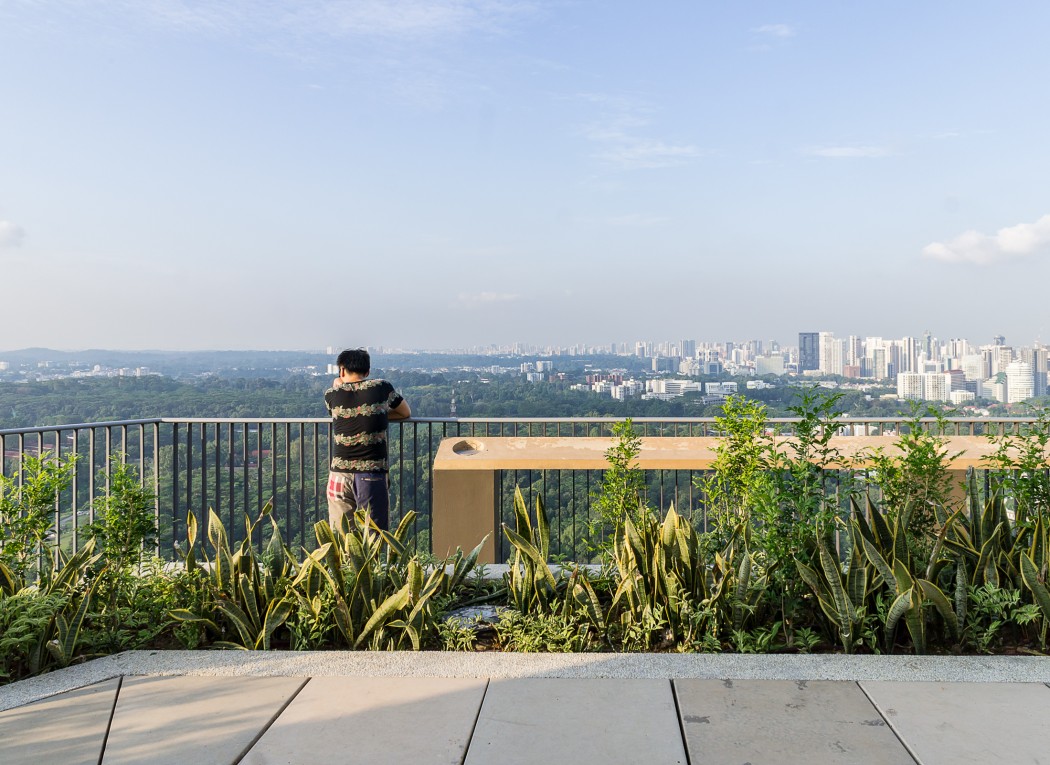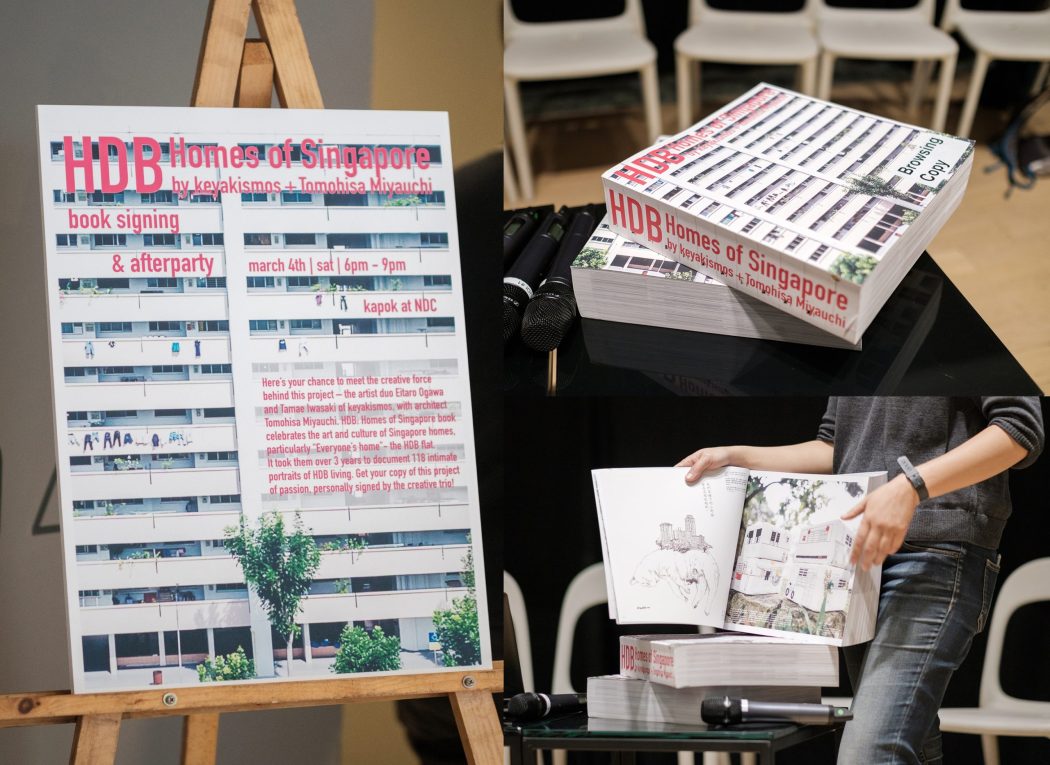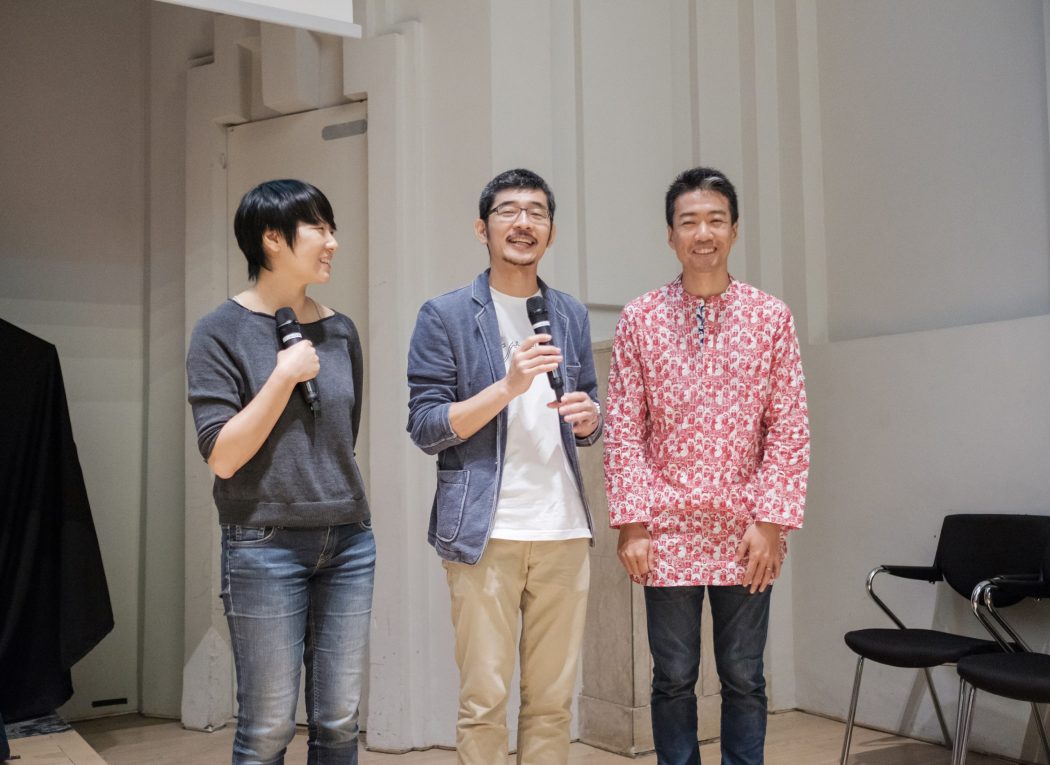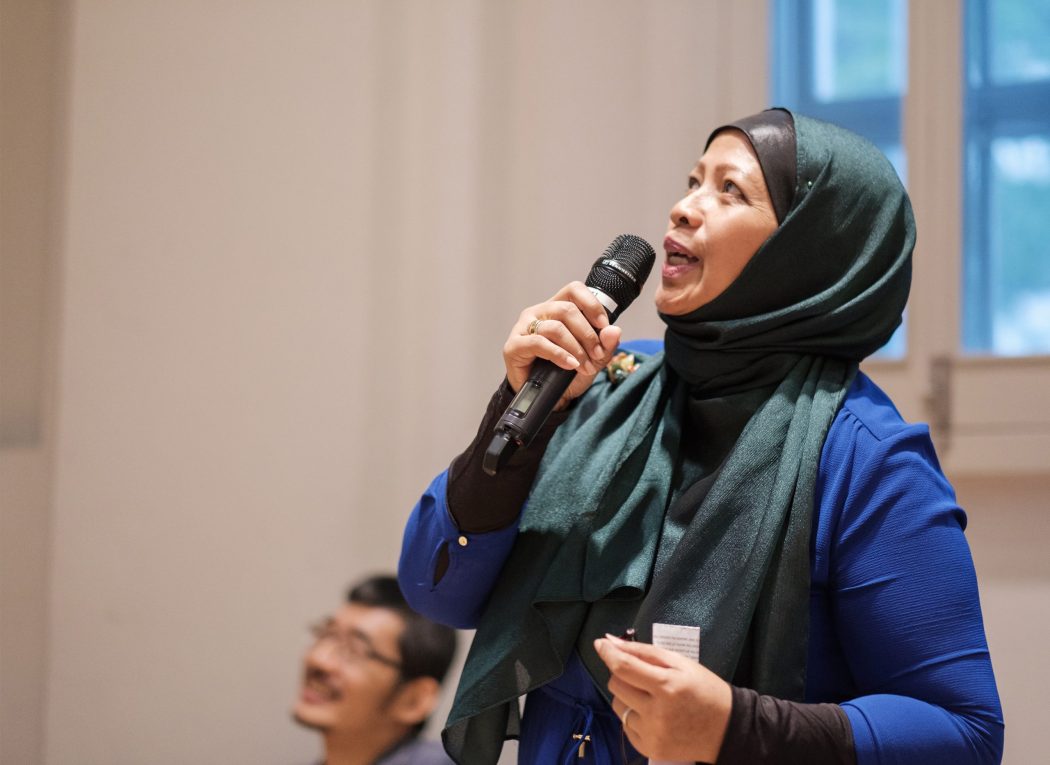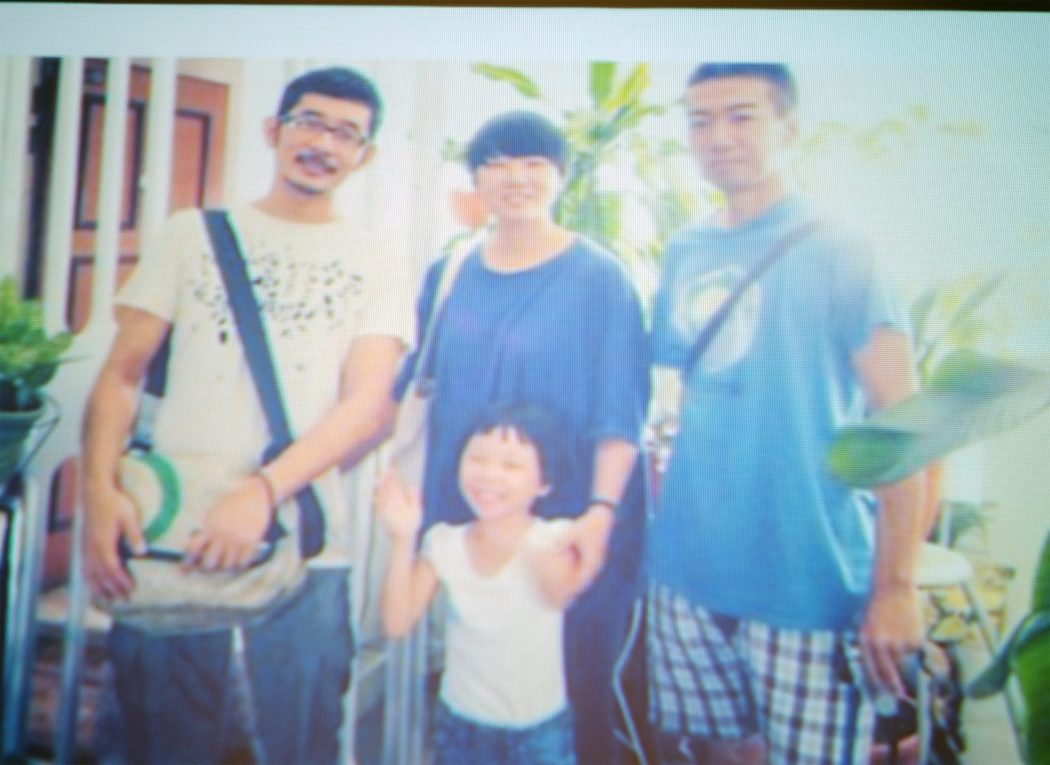Authors: Keyakismos (Tamae Iwasaki, Eitaro Ogawa) + Tomohisa Miyauchi
Photography: Tomohisa Miyauchi
Editorial Design: Akira Hombo
Languages: Trilingual book in English, Chinese and Japanese
On Sale at
https://www.amazon.com/HDB-Homes-Singapore-Tomohisa-Miyauchi/dp/9811122865/ref=sr_1_1?s=books&ie=UTF8&qid=1528284146&sr=1-1&keywords=HDB
Indigogo Crowdfunding Site:
https://www.indiegogo.com/projects/book-project-hdb-homes-of-singapore-art-community#/
Straits Times Article:
http://www.straitstimes.com/lifestyle/home-design/people-in-the-spotlight
アジア都市の多様な「住まい方」の啓蒙活動
急速な経済発展と都市化の進むアジア。建国50周年を迎えたシンガポールで、国民の80%が住む公営住宅の計118軒を3年間以上かけて一軒ずつ訪問し、住人とコミュニティとの対話の活動を行い、写真集の作成を通して人々の「住まい方」再考したプロジェクトである。一見単調に見えるシンガポールの公営住宅も、実際に訪問しそこに住む人々と対話をしていくと、そこには多種多様な民族と宗教、家族構成を背景に、質素ながらも豊かな営みと「住まい方」のがあり、社会的にも調和のとれた文化と住環境があった。その活動の記録を写真を中心に展示会と発表会を開催し、そしてアジアから世界に発信するための成果物として一冊の写真集にまとめた。
この活動の記録として全670ページに及ぶ写真集が完成したが、このプロジェクトはただの写真集制作ではない。その活動と過程において、そこに住む人々との対話、それぞれの家庭のストーリーを紡ぎ、被写体である住人と共有し共感していく活動が目的であった。その過程は、世代や民族、宗教を超えて、現代の高密度化していく都市住環境において人々がどのように知恵を絞り、日々の暮らしを豊かに生活し、その可能性を忠実に記録しながら、その「住まい方」を未来に繋いでいくための活動である。またシンガポールにおける多民族多宗教の人々の暮らしを、アジア全体で共有し発信できることは、今後益々人種や宗教を超えた対話と融和が求められる時代に、これからのアジアの都市の発展と住まい方を考える上で大変有意義であると考えた。そして最終的にこのプロジェクトはクラウドファンディングによりサポートコミュニティを形成することで写真集を出版に至った。
建国50周年を迎えたシンガポール。国民の80%以上が、HDB(エイチ・ディ・ビ-)と呼ばれる国の政策によって作られた集合住宅群に住んでおり、人々はその住戸を所有している。HDBは国民同士で売買することができ、資産価値があり、年金の積み立てを購入ローンの一部にすることができる。日本の公団との違いは、HDBの住戸を国民それぞれが実際に所有しているという点である。よってHDBとはつまりシンガポールの国民にとっての家でもあり故郷でもある。シンガポールは、中華系・マレー系・インド系などの民族や、宗教においては仏教・キリスト教・イスラム教など多宗教が入り混じる国家である。そのような多民族国家のくらしと住環境のあり方を考えその体験と共有していくことは、これからも都市化の進むアジアの住環境を考える上で、人々の生活と死生観を理解し共感しながら、民族と文化の融和と多様性を考える上でも貴重な活動であった。
HDBで生活する各家庭を、あたかも友人を訪ねるごとく丁寧に訪問した。訪問撮影は、まず友人からスタートし、友人からその友人への紹介によって訪問先を広げていった。また時折飛び込みでドアを叩くこともあった。この活動の趣旨を住人に伝えると、幸いにもほとんどの人々が大変協力的で、お茶や時にはビールなどを振舞ってくれながら、家族の話や思い出話をいろいろ聞かせてくれた。各住戸には、住む人それぞれが大切にするもの神棚や思い出の品の数々があり、そこには人々の記憶と日々の生活観が展開され、訪問はあたかも宝箱を開いていくようなプロセスであった。またお隣近所を紹介してもらい、集合住宅においても人々は見えないコミュニティを形成していることもわかった。シンガポールは一見合理主義的で冷たい印象を持つことあるが、その根底には明るく朗らかでお隣近所を大切にする「カンポン・スピリット」(古き良き、村の精神)があった。
この活動の記録は2013年に開始し地道な活動をもとに継続し、2016年ベニス建築ビエンナーレのシンガポール館において、シンガポールの住環境を紹介するメインの出展として紹介されるに至り、世界中からのビジターに紹介されることでシンガポールのHDBのあり方をアジアの集合住宅における住まい方として、全世界に効果的に紹介することができた。その後の2017年のシンガポール・デザインウィークにおいても、ビエンナーレ出展の帰還展として、シンガポール国立デザインセンターにおいてこの活動が紹介され、更にシンガポール国民の周知になるに及んだ。この活動は国内外の様々なメディア、日本ではNHKの国際報道で紹介されて反響があった。この活動は写真集にいたる過程では、訪問した住人のみならず話を聞いた様々な人から、クラウドファンディングを通してスポンサーとなって頂き、この写真集というかたちにまとめることになった。
Singapore and HDB Flats
In 2015, Singapore celebrated the 50th anniversary of its independence. Around that time, I had also been teaching architecture at the National University of Singapore (NUS). In this modern cityscape of Singapore, there are buildings that I felt were similar to buildings in Tokyo, where I grew up. These so-called HDB flats (Housing and Development Board) are public housing clusters built under Singapore’s national housing policy, housing more than 80% of its citizens.
HDB flats may be sold to and purchased by private citizens and retain as asset value, and the buyer may choose to use his/her Central Provident Fund savings for the down payment. HDB flats are, in essence, homes and a homeland for Singaporeans. Unlike the skyline of Singapore, which is often introduced to overseas observers as a symbol of economic success, HDB flats contain and represent the lives of everyday Singaporeans. As an educator of architecture in this country and also an architect with the occupation of making homes and cities in which people live, I believe that it is first necessary to understand the views of life from the people of the land. HDB flats are therefore of tremendous interest to me.
Meetings with Remarkable Men
This project began when I met Tamae Iwasaki and Eitaro Ogawa (a.k.a. Keyakismos). We were introduced by Professor Ng Wai Keen at an architectural exhibition when I had just started teaching at the Department of Architecture in NUS. During our casual conversation, we discussed the possibility of creating a book about HDB flats. The HDB flats of Singapore look rather simple from the outside, giving the impression that they are similar. But at the same time, it is quite intriguing to understand how people of different generations, cultures, and backgrounds all live in harmony. We were so excited about the idea of exploring how people live in HDB flats, that we actually visited and photographed the interior of flats. We decided to start our photo shoots before the end of the same month. I had studied film-making before architecture, and could handle a camera without hesitation, although the camera I had was an inexpensive and commonly available one. Tamae and Eitaro have lived in Singapore for some time. They work as in-house print-makers at the Singapore Tyler Print Institute (STPI) and have made many friends through their church and from other activities. The flats that I photographed – both HDBs and flats in the Tiong Bahru estate, developed by the Singapore Improvement Trust (SIT), a predecessor of HDB – belonged to their friends and their friends’ family members, and through them we met even more people, expanding our circle of acquaintances spontaneously and organically.
Of course, people prefer privacy; they do not like showing their private lives to others indiscriminately. However, for Singaporeans, it is also in their nature to welcome friends and family members, and spend time with them for tea and meals over weekends. Tamae and Eitaro would, on occasion, just bravely knock on the door of a flat that looked intuitively interesting from outside. In most cases, the flat owners would welcome us in once they had learned the intent of this project. This project, therefore, would not have been possible without Tamae and Eitaro’s warm personalities and their knack for making friends. Neither would it have been possible without the overwhelming consent of many flat owners, who accommodated and opened their homes to us on weekends, sometimes with absolutely no forewarning but understanding the merit of this project, welcomed us like old friends, and over tea, sweets, and at times, beer, – recounted for us their family histories and gave us a glimpse of their private lives. Tamae, Eitaro, and I are very thankful to them and wish them good health and great happiness.
In addition, because I had only recently arrived from Japan, I felt that each act of welcoming me was tantamount to warm acceptance by all Singaporeans, as well as the society of Singapore, which was then still a foreign culture to me. I was very lucky to have had this experience more than once, and it was an enormous source of encouragement while I was adjusting to life in Singapore. These precious experiences remain a great source of inspiration even when I teach at the university, educating the young and hopeful future generation of Singapore. This project was also a great opportunity for me, having just arrived, to witness and record people’s lives with fresh and innocent eyes, not knowing anything but it was, in itself, to be a great opportunity for learning. With Tamae and Eitaro, I enjoyed the process of forming new relationships with Singapore flat owners and glimpsing their lives – like opening a jewellery box every time. In no time, I had photographed the interiors of more than 100 HDB flats.
Photograph with Friends and Families
The photos were taken over a period of three years, including the 50th anniversary of Singapore’s independence, as a way of casually spending the weekend with both the photographed families and us, sometimes including our children. Despite my vocation as an educator in the university, this photographic documentary was not based on any academic approach. We preferred the common-sense approach, of making friends to get to know people and talk about their lives in Singapore. The process was just like spending time with friends and family members.
Essentially, every flat is a home for the daily cycle of eating, relaxing, sleeping, and so on, so it can be quite a mundane space. But after encountering the life of its remarkable inhabitants, I came to realise that this experience was really about discovering the richness of lives within these homes. I do not have an academic, critical, or probing lens to come up with an exact quantification and definition of what this richness means. But after witnessing how people live, I now understand that the flats no longer appear to me as mere public housing, but as true homes from the inside out. As architects, we are trained to be able to feel and understand the senses and sensibilities of people living in space. So, this photographic exercise was as if to observe how a new life forms sprout, develop, and finally emerge from the space; there are infinite possibilities of richness in our lives. In that regard, each and every HDB flat is a life in itself; it is a unique, artistic and sacred one. I believe an architect’s work always begins from empathy for people living in the home and city.
Home is like a Temple
Every time one wakes up, there are the ceiling panels, floor planks, switch plates, and cupboards that appear; mundane day-to-day scenes in front of our eyes. Our routine actions are repeated over and over again until one cannot remember how many times he/she has gone through them. The conscience of the resident prevails in the home in which such daily routines of life recur as if our life is some form of ritual. These actions in a sense transcend oblivion and accumulate as the memory of space. After many repetitions of such daily actions, we tend to forget about them, but after a while, space starts to be associated with our memory and meaning. There are also physical memories that are embedded in each and every stain, wrinkle, scratch, and finger marks in that space. Our consciousness goes beyond these numerous recollections of joy and pain in our daily life. What if you could touch and feel those consciousness that is diffused throughout this living space? You would be struck by a sense eclipsing our ordinary perceivable dimensions as if one was a monk emerging from meditation. Maybe, this experience comes from having seen too many flats!
A mini table within the kitchen is a portal to a world, in which an ‘uncle’ takes a sip of tea every morning and reads the paper. If one perceives the teacup with warm steam rising into the air, it is evident that his energy activates and controls the space around it. The way this table exists would allow one to perceive, without directly seeing him, whether he is about to start drinking or finish the tea, and whether he is about to take a nap or ready to go out. These photographs were taken from the perspective of sensing that energy and observing his actions; they captured the ambience of the space, and not the man or the man in action. Moreover, the elements on the small table, such as the teacup, a pencil, a can of biscuits, a picture of his grandson, a desktop calendar, etc. are like celestial bodies located within his own microcosm. These elements change their relative locations slightly with every day. He is, therefore, observing his own life, using them as points of reference while enjoying these small daily changes.
This richness resides in the unquantifiable relationships produced through these repetitious actions, and among everyday artefacts. For each resident, there exists a virtue within the flat. With many different kinds of virtue in it, a living environment bears a sacredness similar to that of a shrine or temple; however, it is a private home, closed off from the outside. A home, in its interior domain, exists in dimensions totally different from what is perceived from the outside. For me, it is really interesting to romanticise a notion that each home contains the possibility of re-establishing rich relations while transcending the limitations of time and space. It does not come in the form of a temple but has the intrinsic values of one. In this temple, time can be very fast or very slow. The temporal flow is sometimes varied; this is obvious if one observes the different lifestyles of each family member. The children leave the house in the morning, earlier than anybody else. They may eat together. Grandma goes to bed in the early hours of the evening. This is the only temple in which the timeframes of family members overlap here and there, fast and slow, while each action sublimates and inherits virtue. Room-cleaning and dishwashing are everyday rituals of cleansing and contemplation, leading to the attainment of virtue. As the ritual is repeated, life keeps revitalising its sanctity.
Climate and Sensitivity
This tropical weather feels like a perpetual summer. But, on the contrary, Singapore does not lack seasons. The climate of Southeast Asia is characterised by the ever-changing light quality and humidity levels. Wind speed and direction, as well as light conditions, affect the humidity. Even in a city, the intensity of light, wind, and precipitation keeps changing. It is as if they were infinite seasonal changes, in very short intervals. That is why this diversity in climate conditions generates rich soil, giving life to a myriad of life forms. Here, plants grow very quickly, as indicated by the rich variation in the shapes and flavours of tropical fruits and blossoms. There are so many variations of seasons in Singapore.
HDB flats typically do not use thermal insulation but instead are designed with relatively short depths of building blocks, to allow the wind to go through for ample natural ventilation. With breezes passing through in different directions, their internal humidity and apparent temperature are well regulated. If one looks out from a high-rise HDB flat, you will feel as if the building is a sailboat cruising across the ocean, because you can experience the ever-changing clouds and direction of the wind. There may be clear skies one moment, and a shower coming down the next. It may even rain in the midst of sunshine.
For those who have just landed in Singapore by aeroplane from a different climate zone, HDB housing may look like just a singular block with non-descriptive surfaces. However, it is like looking only at the exterior surface of a sailboat from the outside. But, if one gets onboard this sailboat, the experience is as if the world starts turning with this ship as its centre. Looking at the sky from inside the HDB, I felt as if I was standing at the stern of the sailboat, watching the waves produced by its movement disappear into the horizon, because of the ever-changing winds, clouds and climate conditions located near the Strait. This sensation also made me feel the undercurrents of our lives, with any sense of time constantly disappearing into the horizon. Likewise, the vicissitudes of our daily lives are like ripples that flow towards and disappear beyond the horizon for eternity.
I would be delighted if you enjoy these photographs and immerse yourself in them, wandering through the numerous microcosms pictured by them. I am certain that you will, through this process, make many discoveries and become more aware of the rich lives of the people documented therein.
Tomohisa Miyauchi
新加坡和组屋
2015年,正值新加坡庆祝建国50周年。在此期间,我有幸在新加坡国立大学(NUS)建筑系任教。在新加坡现代化的城市景观中,我注意到有一种建筑与我的故乡东京很类似。那就是组屋(HDB flats)—HDB全称是建屋发展局。组屋是国家住房政策下的公共住房。在新加坡,超过83%的国民拥有自己的组屋住房。组屋是在新加坡的住房和国家发展政策的背景下产生的。组屋是一种保值的固定资产,公民(以家庭为单位)购买或出售组屋,购买者可以提取其中央公积金账户内的存款支付首期。从本质上讲,组屋正是新加坡人的居所和家园所在。与被外界视为新加坡经济繁荣象征的天际线不同,组屋承载并代表新加坡人的日常生活。作为这个国家的一个建筑学教育者,同时作为一名致力于为当地居民建造房屋和营建城市的建筑师,我认为了解当地人民关于生活的观点和看法是首要的。也正因此,我对组屋产生了极大的兴趣。
与杰出人士的会谈
项目的缘起,要从我遇到 小川栄太郎和岩崎玉江夫妇谈起。当时我刚到新加坡国立大学建筑系任教,在一次建筑展览中伍伟坚教授将我引见给这对夫妇。在交谈过程中,我们迸发出写一本关于组屋的书的想法。新加坡的组屋从外面看起来是很简单的,几乎给任何人留下同样的印象。但同时,人们又会对组屋建筑内不同代际、不同文化和背景的人如何和谐生活在一起产生兴趣。 我们对这一想法感到非常兴奋,并在当月即对组屋内部进行了实地参观与拍摄。在学习建筑之前我曾经学习过电影制作,虽然当时我的相机只是一个普通的廉价通用型索尼数码相机,但我还是可以随心所欲地熟练操控它。小川栄太郎和岩崎玉江夫妇已经在新加坡住了一段时间。他们是新加坡泰勒版画研究院(STPI)的室内版画家,并且通过教会和其它活动结交了许多朋友。我拍摄的组屋(和一些在中峇鲁区由新加坡住宅改善信托[SIT]—即建屋发展局的前身开发的公寓)都属于他们的朋友和他们朋友的家庭成员。通过他们我们认识了更多的人,有机自发地拓展了我们的熟人圈。
当然,人们是尊重隐私的,他们不喜欢把自己的私生活肆意地展现给别人。然而,对于新加坡人来说,欢迎朋友和家人并与他们共享下午茶和晚饭时光也是他们的天性。小川栄太郎和岩崎玉江夫妇有时会勇敢地直接敲一敲那些从外部直觉判断会比较有趣的组屋的房门。当业主们了解了这个项目的本意后,大多数情况下都会欢迎我们。因此,如果没有小川栄太郎和岩崎玉江夫妇热情的性格和他们交友的诀窍,这个项目也是不可能完成的。同时,项目的完成更离不开那些在周末为我们敞开家门的业主们的理解与帮助,甚至是在完全没有在事先告知的情况下。他们就像老朋友一样欢迎我们,去了解这个项目的价值,而且邀请我们喝茶,吃糖果,有时甚至还有啤酒,为我们讲述他们家族的历史,展示他们的个人生活。小川栄太郎和岩崎玉江夫妇和我都非常感激他们,真诚地祝他们幸福安康。
此外,对于刚从日本来到这里的我而言,新加坡仍是异国。每一次欢迎我的行为都相当于被所有新加坡人和整个新加坡的社会所认可。我很幸运能有多次这样的经历,这给当时正在习惯新加坡生活的我带来了巨大的鼓舞。即使当我在大学任教,培养年轻和充满希望的新加坡下一代时,这些珍贵的经历仍然是伟大的灵感来源。这个项目用新鲜而单纯的视角见证和记录人们的生活,这对刚刚抵达新加坡还什么都不了解的我来说也是一个很好的学习机会。与小川栄太郎和岩崎玉江夫妇并肩同行,我很享受与新加坡组屋业主们建立新的关系,观察他们生活的过程,就像是每次打开一个珠宝盒。在很短的时间内,我已经对100多间组屋内部空间进行了拍摄。
拍摄朋友和家人
以一种作为拍摄者的我们与被拍摄者家人一起轻松度过周末的方式,这些照片前后共拍摄了三年的时间,其中包括新加坡建国五十周年纪念日。虽然我是一名建筑师和大学教育家,但这部纪录片的摄影过程并不依靠任何学术方法。我们更喜欢通俗易懂的方法,即通过与人们交朋友了解他们,与他们谈论在新加坡的生活等等。这个过程就如同与朋友和家人一起度过时光一般。
本质上而言,每一套组屋都是吃饭、休息、睡觉等日常生活发生的场地,所以它是一个比较平凡的空间。但是在体验了居民们的生活之后,我意识到这个经历实际上是要发现组屋中丰富的生活。我没有用学术的、批判的或是探索的方式来为这种丰富进行精确的量化和定义。但在亲眼看到人们是如何生活的之后我理解到新加坡的组屋并不像展现给我们的一样,只是公共住房,组屋是他们真正的家园。作为一个建筑师,我们通过训练来感受与理解生活在不同空间中的人们的感受。因此,这个拍照练习就像是观察一个新的生命是如何从发芽、生长最后到成形的。在我们的生活中有无限丰富的可能性。从这个方面来说,每一个组屋本身就是一种生活,并且是独一无二、艺术而神圣的。我相信一个建筑师的工作总是始于一种与生活在家园中、城市中的人们之间的共鸣。
家即庙堂
我们每天醒来时,映入眼帘的都是天花板、木地板、开关板和橱柜等平凡的日常生活场景。日常活动一次又一次地重复,直到我们都不记得自己做过多少次这些事。日常琐事重新唤醒了我们关于家庭的意识,就像是在执行某种仪式。这样的琐事在一定意义上都不会被遗忘,而会被记录在承载记忆的空间里。经过许多类似日常行动的重复,我们往往会试图忘记他们,但在一段时间后,空间开始与我们的记忆和意义相重叠。在这空间中也有物质记忆,嵌入在每一个污点,皱纹,划痕,和指痕中。我们的意识超越了这些日常生活中无数的回忆、欢乐和痛苦。如果你可以触摸和感觉到弥漫整个生活空间的意识,你又会怎么样?你会震惊于我们可觉察的维度已被消解,正如和尚在冥想的过程的体验。也许,这是因为见过太多公寓的原因!
厨房里的迷你桌边,一位“大叔”每天早上喝茶看报,这个迷你桌带我们通向“大叔”的世界。在这个世界中如果有一个冒着蒸汽的茶杯,那么很显然他的能量在激活和控制他周围的空间。桌子存在的方式让我们不用直接看就能够察觉到,“大叔”是正要开始喝茶还是已经喝完了,他是正要去小睡一会还是打算出门。这些照片的拍摄角度是基于感知能量与观察活动;它们捕获了空间的周围氛围,不是人也不是在活动的人。此外,那个小桌子上的元素,比如茶杯、一支铅笔、一罐饼干、一张孙子的照片和一个台式日历等等,都像他自己微观世界中的天体。这些元素的相对位置每天都在轻微地改变。因此可将它们作为参照点来观察他自己的生活,同时享受这些小的日常变化。
这些重复动作所产生的非量化的关系决定了生活的丰富性。在公寓内,每一个独立的个体都有独特的价值。当许多不同类型的价值汇聚一起时,一个居住环境就变得十分庄严,如神社或庙堂一样。然而,它是一个私密的居所而对外界封闭。一个新加坡组屋公寓的内部场域与我们从外界所感知到的角度完全不同。用更加浪漫的话来说,就是它超越时空界限,蕴含了无数重建丰富的关系的可能性。它并没有像庙堂一样的外形,但却有庙堂内在的价值。在这个庙堂中,时间流有时是多变的,时快时慢;这一点在我们观察家庭成员不同的生活方式时是显而易见的。早上,儿童在比其他人都更早离家出门。他们可能一起吃饭。祖母在晚上较早睡觉。这是一个唯一的庙堂,在其中家庭成员的时间帧在不同的地方部分重叠,同时每一个动作都在升华和继承一定的价值。每天所做清洁和洗碗都是净化和沉思的仪式,它们引导着品质的获得。当这个仪式重复进行时,生活就在不断地复兴它的神圣性。
气候与敏感性
热带性气候就像一个永恒的夏天。与表象相反,新加坡并不缺少多变的气候。东南亚的气候具有变化莫测的光照和湿度水平。甚至在城市中,光强、风力和降水也在不停改变。即使在一个城市,光的强度,风和降水不断变化。仿佛在很短的时间间隔内就有无限的季节变化,这就是为什么这个多样性的气候条件下会产生如此肥沃的土壤,赋予生命以千姿百态的形式。在这里,植物生长非常迅速,热带水果的形状与味道以及花期的丰富变化也证实这一点。新加坡季节如此多变!
组屋公寓不采用隔热,而设计进深相对较短以满足足够的自然通风。随着微风穿越不同的方向,其内部的湿度和表面温度显然会得到良好的协调控制。如果从高层组屋向下俯瞰,会觉得建筑就像一艘在海上巡航的帆船,因为在这里你可以体验到千变万化的云彩和风向。也许这一秒还是晴空万里,下一秒就是倾盆大雨。当然,还可能伴随太阳雨的出现。
对于那些刚刚从不同的气候区飞抵新加坡的人来说,组屋的外观就像不具识别性的普通住区。然而,这是仅仅就像从外部远眺一艘帆船。一旦乘上了这艘船,仿佛世界就开始以这艘船为中心进行转动,然后站在组屋中眺望天空,因其多变的风、云与气候条件,就像站在船尾,看着因它的转动而产生的波浪消失在海平线上。这种感觉也让我想到我们生活中的暗流,随着任意时间的变化不断地消失在地平线。同样的,人们生活的变迁所激起的生活的涟漪,它们向远方扩散最后永恒地消失在地平线。
如果你享受这些照片并且沉浸其中,并且能够在许多的微观世界中漫游,我会感到很欣喜。我确信通过这个过程,你会有诸多发现,并且对影像中所记录的人们生活的丰富程度有更加敏锐的洞察。
宮内 智久
シンガポールとHDB
2015年、シンガポールは建国50周年を迎えた。同じ頃、シンガポール国立大学で建築を教えることになった。シンガポールの近代的なランドスケープの中には、私が育った東京の環境に近い、ある種の懐かしさを憶える場所があった。それはHDB(エイチ・ディー・ビー)と呼ばれる、国の政策により作られた集合住宅群である。HDBとはHousing Development Boardの略であるが、一般的にはHDBフラットと呼ばれる。国民の優に80%以上が、このHDBを所有している。HDBは国民どうしで売買することができ、資産価値があり、年金の積み立てを住宅ローンの一部にできる、シンガポールならではの住宅政策によって生まれた集合住宅なのである。私はこの国で建築を教える立場として、また人々の住む建築や都市を創造する建築家として、まず先にその土地に暮らす人々の生活、死生観を深く理解する必要があると考えた。 HDBとはつまりシンガポールの人々にとっての家であり故郷でもある。そこには海外で紹介される経済成功を象徴するスカイラインとは異なり、人々の生活感を感じことができる。教師として建築家として、HDBに大変な興味を抱いた。
出会い
このプロジェクトは、たまえと栄太郎(a.k.a. keyakismos)のカップルに出会ったことから始まる。彼らとは、シンガポール国立大学大学建築学科で教え始めたばかりの頃、ある建築の展示会で、同学科のNG Wai Keen教授の紹介で出会った。彼らと話をする中で、HDBの本を作ったら面白いのではないかという話で盛り上がった。シンガポールのHDBは外から見ると単調な印象を抱く。しかしその中で、シンガポールの多種多様な人々がどのように暮らしているのか、誰もが興味を持つはずだ。意気投合した私たちは、早速その月のうちに撮影を始めることになった。私は建築を勉強する前に映画を勉強していたこともあり、まったく抵抗感なくカメラを構えた。使用したのは、一般に売られている安価なソニーのデジカメだ。たまえと栄太郎夫妻はシンガポール生活が長い。彼らはSingapore Tyler Print Institute (STPI) で専属のプリンターとして勤めており、教会の活動などを通して、たくさんの人たちと友好関係があった。撮影させてもらったHDBフラット(そして何件かの、チョンバル地区にあるHDBの前身であるSingapore Improvemnt Trust (SIT) の住戸)は、彼らの友人、または友人の家族といった有機的な広がりのなかで撮影が進められた。
勿論、シンガポールの人々はプライバシーを好む。無闇に他人に家の中を見せたがらない。だが友人や家族にはわりにウェルカムな態度で、お茶や食事を一緒に楽しむ習慣がある。時折、たまえと栄太郎が直感的に面白そうだなと思う家のドアを勇敢に叩くという場面があった。初めて出会う人々もたまえや栄太郎がこのプロジェクトの趣旨を話すと、たくさんの人たちが共感してくれその場で門戸を開いてくれた。このプロジェクトはたまえと栄太郎のカップルのとても優しく温厚な人柄、誰とでも打ち解けることのできる人となりがなくては、成り立たなかったと思う。また週末、しかも、突然の来訪にも拘らず、このプロジェクトに「面白そうだ」と共感し、あたかも旧知の友人が来たかのように、お茶やお菓子、時にはビールなども振舞いながら、家族の歴史を語って聞かせてくれたり、生活を垣間見せてくれた方々には、たまえと栄太郎と共に、感謝と彼らの幸福を祈る気持ちでいっぱいである。
また、この頃は日本から来たばかりで慣れないこともあった。そんな私にとって、シンガポールの人々に家に招き入れてもらうという行為は、まるで、異国であるシンガポールの人々そして社会自体に温かく受け入れてもらえたように感じた。この経験を繰り返すことで、大きく励まされたのは幸運だったと思う。この貴重な経験は大学で若い次世代を教える立場にとって、大変なインスピレーションになっている。また、この国に来たばかりで、先入観のない目を通して人々の暮らしを撮影することのできるという、またとない好機でもあった。たまえと栄太郎と共に、シンガポールの人々との繋がりと、毎回宝石箱を開けるようなプロセスを楽しむうちに、気づくと100件以上の撮影を行っていた。
見守ること
被写体である人々、その家族、そして撮影者である私達の週末のすごし方の一部として、この写真は3年間、建国50周年をまたいで撮影が行われた。私は建築家、そして大学教員といった立場ではある。だが、この写真によるドキュメンタリーには、学術的なアプローチは全く必要なかった。建築家は、そこに住む生活者の視点と感覚を失うことがないよう考えながら建築を考える。このプロジェクトは、学術的かつ批判的、検証的なレンズでは写ることのない、人々の営みを内側から、その豊かさを再発見していく作業であった。この作業は、内側から殻をやぶり、発芽し、いのちが生まれ、発展し、うつろいでいく様子を、「見守る」作業であった。友人や家族と過ごすが如くに見守る作業である。
建築家が担う職能の一つは、それぞれの人が大切にする領域を認識することだ。私の目の前には、生という神聖で介入することのできない領域があった。そういった観点から見ると、一つ一つのHDBフラットは生命そのものでもあり、唯一無二の芸術の領域にある。そこにわざわざ現代建築、住宅や家族という観念を再考する必要は無い。何故ならば我々はそこにおいて、”ただ率直に生活する”、”ただ率直に生きていく”という可能性を確認するからだ。生活者にとっては、構築物のあり方は勿論のこと、ステータスの問題からも無関係だろう。そこは、”食べる・くつろぐ・寝る “といった日々の生活が淡々と営まれる空間だ。言ってみれば、生きた空間である。その領域は神聖なエリアであり、生がある限り破壊することはできない。渦巻く世界の中心にそれぞれの生活があり、穏やかで豊かな意識の領域が創出され続ける。建築家としての最前線は、この内側に広がり続ける小宇宙に無限の可能性があることを再認識することである。そのような建築家の可能性と職能的特権は、まず共感することから始まるはずだ。
家という寺院
衣・食・住という、別段特別ではない行為が繰り返されるこのフィールドに、生活者の意識が滞留している。そこには何度目覚めても目の前には、天井、床、スイッチ、キャビネットなどが出現し続ける。何度使用されたかわからないほど、ひとつひとつの繰り返される行為が重なり続ける。その空間に蓄積された、しみ、しわ、傷、手垢、その一つ一つに、身体的な記憶が組み込まれている。その行為は言い換えれば、忘却される1つ1つの行為と記憶を、超越しながら感じていくことである。様々な感覚が繰り広げられた末に空間は意味を帯び、いくつもの感覚的な喜びや痛みの中で生活者の意識としての主体が浮かび上がっていく。そのフィールドの中で、ちりばめられたものを恐る恐る触ってみたらどうなるか。おそらく、寺院のように、時空を超えた感覚があなたを触発するであろう。
キッチンにあるミニテーブルは、おじちゃんが毎朝お茶を飲み、世界に繋がるために新聞を読むためのポータルでもある。その卓上に湯気の立つお茶碗があれば、おじちゃんというエネルギーが空間を活性化し支配していることがわかる。そのテーブルの様子を見れば、直接おじちゃんの行為を見なくても、おじいちゃんがこれからお茶を飲むのか、飲み終わったのか、これから昼寝をするのか、出かけるのかを認識することができる。この写真はそのようなエネルギーを感じること、そしてその営みを見守る行為としての視点で撮影し、その気配を写している。また、小さいテーブル上にある様々なものーお茶碗、鉛筆、ビスケットの缶、孫の写真、カレンダーーなどの配置は、彼(おじちゃん)自身という小宇宙に配置された、星のようなものだ。それぞれの微妙な配置の違い、その移ろいを日々楽しみつつ、それらを定点としておじちゃんは自分の人生を観測している。
彼らが繰り返し行い続ける、数値化できない関係性に豊かさは存在している。それぞれの主体にとっての様々な徳が存在している。様々な徳によって、あたかも寺院のように、住環境は神聖さを帯びていく。外部からは閉ざされながら。つまり、内部空間としてのHDBは、外部として認識されるものとは全く別次元なのだ。ロマンチックに考えてみると、”時空を超えて、豊かな関係性が繋がる可能性”を内包している。それは一般的に寺院のようなかたちを帯びてはいないが、本質的には同じことだ。その寺院の中では、時間の流れが変調されつつも共存する空間がある。時間の流れが異なるのは、同居する家族のメンバーの生活パターンを見ればあきらかである。小学生は誰よりも朝早く家を出る。食事を共にする。おばあちゃんは夜早く床につく。ここは唯一、家族のメンバーの時間軸が少しずつオーバーラップしながら、一つ一つの行為の中で徳が昇華し受け継がれることの許された寺院なのだ。毎日掃除をし皿を洗うことは浄化と瞑想であり、徳につながる儀式のようだ。儀式が繰り返される中で、生活は更に神聖さを帯びてゆく。
風土とアジア的感性
シンガポールは季節が無いわけではない。東南アジアの気候は、刻々と変わる光と湿度のバリエーションが大変豊かな風土である。風の速度、向きによって、光の具合によって湿度も変わる。都市の中にいたとしても、あたかも森の中にいるように、光と風と雨の強弱が、刻々と変わり続ける。季節が無限にまさに短い時間で変わり続けているということだ。そのような気候の変化の中で、多種多様な生物が繁栄する土壌が育まれている。植物の成長するスピードは生態系的にも非常に速い。トロピカルフルーツの豊かな形態と風味がそれを証明する。
HDBは断熱はせずに建物自体の奥行きを短く取ることによって風が抜けるように設計されているため、風の抜け方のバリエーションがとても幅広い。風の抜けによって、湿度と体感温度をコントロールできる。高層のHDBフラットから空を観察していると、あたかもHDBが世界を駆けるセーリングヨットのような感覚を覚える。私たちはそこで、空の雲の様子、風向きが刻一刻と変わっていくことを感じるのだ。晴れたかと思うと、すぐに雨が降り出す。お天気雨もよくある。
異なる気候の国から、飛行機に乗ってシンガポールにやってきたばかりの人からすると、HDBはただのっぺりしたブロックの面のように見えるかもしれない。それはヨットでいえばただ帆の表面を眺めているだけのようなもので、集合住宅のかたちとしてしか見ていないということだ。実際にこの船に乗ってみると、船を中心として世界がぐるぐると動き続けているように感じる。客船の後尾から、船が作った波が水平線の遠くへ消えゆくのを眺めるような、そんな感覚を憶える。生活感の根底に流れているのは、そのような、水平線に対して時が流れ消えゆくような感性なのではないだろうか。つまりこのような感覚は、船が起こした波、人生の浮き沈みがそのうちに水平線に未来永劫回帰していくのを眺めるような、渡洋的かつ、アジア的な感性であるのかもしれない。このような感覚に触発されることが、人々の住まい方に魅了される理由なのかもしれないと思う。
読者の方々には、ある朝起きたらその住人になっていたかの如く、そしてここに写された数々の小宇宙の可能性の間を揺蕩うが如く、この本を楽しんでいただければ幸いである。その過程にたくさんの発見と人々の生活の豊かさが、あなたを待っていることと思う。
宮内智久




